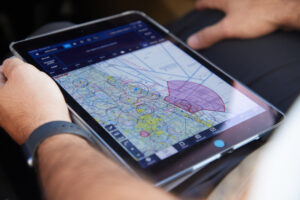Notice to Airmen (NOTAM)
Aviation is a dynamic and ever-changing environment where safety is paramount, and at PEA, students receive the highest level of flight training to navigate these changes with confidence. To ensure pilots are equipped with the most current information about flight conditions, the Notice to Airmen (NOTAM) system provides critical updates on airspace restrictions, hazards, and operational changes. Understanding NOTAMs is essential for pilots of all experience levels, and at PEA, students are thoroughly trained to interpret and apply NOTAMs effectively, ensuring they are well-prepared for real-world flying.
 What Is a NOTAM?
What Is a NOTAM?
A NOTAM is an official notice issued to alert pilots of temporary or time-sensitive information that may impact flight safety. These alerts include details about runway closures, navigation aid malfunctions, airspace restrictions, and even large public events that could affect air travel. NOTAMs help pilots make informed decisions before and during their flights, ensuring operational safety and regulatory compliance.
Types of NOTAMs
There are several categories of NOTAMs, each serving a unique purpose in aviation safety. Pilots must understand the distinctions to interpret them correctly and apply the necessary precautions.
Domestic NOTAMs (D NOTAMs)
D NOTAMs provide information on changes to airport facilities, runway conditions, obstructions, and navigational aids. These NOTAMs are essential for all flights operating within the United States and are regularly updated to reflect real-time conditions.
FDC NOTAMs (Flight Data Center)
Issued by the Flight Data Center, these NOTAMs address regulatory changes, such as temporary flight restrictions (TFRs) or amendments to instrument approach procedures. They often include airspace restrictions due to VIP movements, security concerns, or national emergencies.
Military NOTAMs
Military NOTAMs are issued for military airfields and operations. While primarily intended for military pilots, they can be relevant for civilian pilots operating in or near military-controlled airspace.
International NOTAMs
International NOTAMs provide critical information for flights crossing international boundaries. These notices are essential for pilots operating outside the United States and cover airport operations, airspace restrictions, and navigation aids across different countries.
Graphical NOTAMs (Advisory)
Graphical NOTAMs visually represent airspace restrictions and hazards. These are particularly useful for pilots planning flights in areas with complex airspace conditions, as they provide a clear, visual depiction of affected areas.
How to Access NOTAMs
Pilots can access NOTAMs through various official sources, including:
- FAA’s NOTAM System – The FAA’s website provides a comprehensive database of active NOTAMs.
- Flight Service Stations (FSS) – Pilots can contact FSS for NOTAM briefings.
- Electronic Flight Bags (EFBs) and Aviation Apps – Digital tools such as ForeFlight and Garmin Pilot integrate NOTAM information for easy access.
- ATIS (Automatic Terminal Information Service) – Provides real-time airport NOTAMs via radio transmission.
Benefits of NOTAMs for Pilots
Before taking to the skies, pilots rely on NOTAMs for important safety information like airspace changes, runway closures, and more. Understanding and checking NOTAMs before every flight helps pilots avoid unexpected hazards and airspace restrictions. It helps them prepare ahead of time, allowing them to plan safer and more efficient routes to travel. Adhering to NOTAMs also ensures their compliance with regulatory requirements set forth by the FAA. Most importantly, the NOTAMs enhance situational awareness and decision-making for pilots, as they will best know what to expect when taking flight.
Tips for Student Pilots on NOTAMs
For student pilots, building the habit of reviewing NOTAMs is an essential part of their flight training at PEA. Our instructors provide structured guidance to help students develop proficiency and confidence in every aspect of flight planning – including staying up to date with critical airspace and airport information.
Here are a few tips to keep in mind when reviewing NOTAMs:
- Check NOTAMs before every flight: Make it part of your pre-flight planning routine.
- Learn how to interpret different NOTAM formats: Some NOTAMs can be complex; practice reading them regularly.
- Use multiple sources: Cross-check NOTAMs from different platforms to ensure accuracy.
- Ask your instructor for guidance: If a NOTAM is unclear, seek clarification from your flight instructor.
Mastering NOTAMs is a vital skill for every pilot. By staying informed and making NOTAM reviews a routine part of flight planning, pilots can enhance safety, make better decisions, and take to the skies with confidence.




